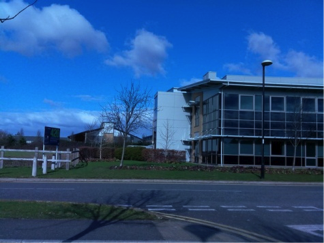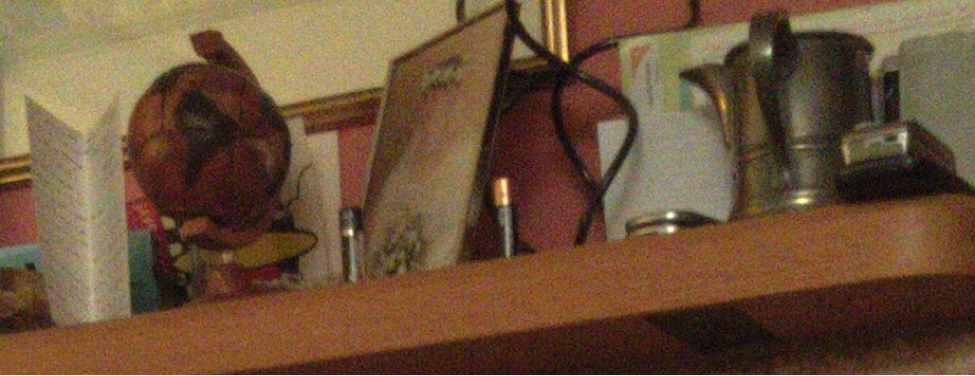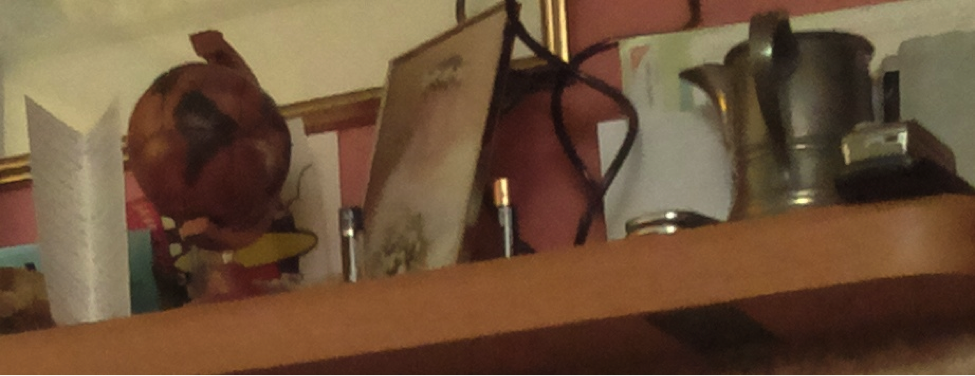| Our friend Matt from Make (whom I totally failed to hook up with for drinks when we were in NYC last month – sorry Matt! We’ll see you at Maker Faire San Mateo) has been busy. This demo is absolutely superb. He’s rigged up a light on the front of his bike that works as a headlight and as a projector to show what speed the bike’s travelling at – Matt has plans to add some more features and make the whole thing rather more beautiful, and we’ll be putting video of the finished article up here as soon as he’s ready. Matt’s book, Getting Started with Raspberry Pi is published by Make – check it out! |
A Semi-automated Technology Roundup Provided by Linebaugh Public Library IT Staff | techblog.linebaugh.org
Wednesday, March 20, 2013
Matt Richardson and the world’s smartest bike light
How to Use Go Launcher on Kindle Fire HD without Rooting
| Thanks to a tip, I can confirm that there is indeed a workaround to get Go Launcher Ex to work on the Kindle Fire HD tablets, and it doesn’t require rooting, hacking, or anything complicated like that. Basically all that is required to use Go Launcher is one extra tap on the screen after installing [...] |
URL: http://feeds.the-ebook-reader.com/~r/feedburner/cmWU/~3/-olRHhjWXr4/
Freaky Dystopian 80's Library Education Show - Tomes and Talismans
Watch: http://www.youtube.com/watch?v=Z5Pb0BdT8Qo
Info : http://en.wikipedia.org/wiki/Tomes_%26_Talismans
Creating the camera board – part two
| Liz: here’s the second and final part of David Plowman’s walk through the development of the Raspberry Pi camera board, which will be available to purchase in April. Before you go ahead and read this, check out David’s first post. The Eye of the Beholder That's where beauty lies, so the saying goes. And for all the test charts, metrics and objective measurements that imaging engineers like to throw at their pictures, it's perhaps sobering that the human eye – what people actually like – is the final arbiter of Image Quality (IQ). There has been much discussion, and no little research, on what makes for "good IQ", but the consensus probably has it that while the micro aspects of IQ, such as sharpness, noise and detail, are very important, your eye turns first to the the macro (in the sense of large scale) image features – exposure and contrast, colours and colour balance. We live in a grey world… All camera modules respond differently to red, green and blue stimuli. Of itself this isn't so problematic as the behaviour can be measured, calibrated and transformations applied to map the camera's RGB response (which you saw in the final ugly image of my previous post!) onto our canonical (or standard) notion of RGB. It's in coping with the different kinds of illumination that things get a little tricky. Let me explain. Imagine you're looking at a sheet of white paper. That's just the thing – it's always white. If you're outside on a sunny day, it's white, and if you're indoors in gloomy artificial lighting, it's still white. Yet if you were objectively to measure the colour of the paper with your handy spectrometer, you'd find it wasn't the same at all. In the first case your spectrometer will tell you the paper is quite blue, and in the second, that it's very orange. The Human Visual System has adapted itself brilliantly over millions of years simply not to notice any difference, a phenomenon known as colour constancy. No such luck with digital images, though. Here we have to correct for the ambient illumination to make the colours look "right". Take a look at the two images below. (You’ll find it easier to judge the “right”-ness if you scroll so only one image is on the screen at a time.) It's a scene taken in the Science Park in Cambridge, outside the Broadcom offices. The top one looks fine, but the bottom one has a strong blue cast. This is precisely because the top one has been (in the jargon) white-balanced for an outdoor illuminant and the bottom one for in indoor illuminant. But how do we find the right white balance? The simplest assumption that camera systems can make is that every scene is, on average, grey, and it works surprisingly well. It has some clear limitations too, of course. With the scene above, a "grey world" white balance would actually give a noticeable yellow cast because of the preponderance of blue sky skewing the average. So in reality more sophisticated algorithms are generally employed which constrain the candidate illuminants to a known set (predominantly those a physicist would describe as being radiated by a black body, which includes sunlight and incandescent bulbs), and in keying on colours other than merely grey (often specific memory colours, such as blue sky or skin tones). The devil is in the details… With our colours sorted out, we need to look at the micro aspects of our image tuning. On the Pi, fortunately, we don't have to worry about focusing, which leaves the noise and sharpening filters within the ISP. Note that some amount of sharpening is essential, really, because of the inherent softening effect of the Bayer mosaic that we saw last time. When it comes to tuning noise and detail, there are generally two camps. The first camp regards noise as ugly and tries very hard to eliminate it. The second camp thinks a certain amount of noise is tolerable (it can look a bit like film "grain") in return for better details and a more natural (less processed) look to the image. To see what I mean, take a look at the following three images. It's a small crop from a picture of some objects on a mantelpiece, taken in very gloomy orange lighting, and the walls are even a murky pinkish colour too. Pretty challenging for any digital camera! The top one has had practically no noise filtering applied to it at all. Actually it shows bags of detail, but I think most people would regard the noise as pretty heinous. The second image demonstrates the opposite approach. The noise has been exterminated with extreme prejudice, but out with the bathwater goes the baby – detail and a "natural" looking result. Though my examples are deliberately extreme, you can find the influence of both camps at work in mobile imaging devices today! The final image shows where we've settled with the Pi – a happy medium, I hope, but it does remain, ultimately, a matter of taste. And de gustibus non est disputandum, after all! Happy snapping! I've only grazed the surface of this subject – there are many more niggles and wrinkles that an imaging system has to iron out – but I'm hoping I've given you some sense of why a proper camera integration represents a significant commitment of time and effort. Whilst you're all waiting for the boards finally to become available I'll stick around on this website to answer any questions that I can. My deep thanks, as ever, is due to those clever engineers at Broadcom who actually make this stuff work. David Plowman, March 2013 |
Acer, Asus Expecting Strong Demand For Tablet PCs
| Taiwanese manufacturers Asus and Acer are gearing up for a higher demand that is expected of Android tablet devices this year. Both have expressed confidence of being able to ship no less than 10 million of these in 2013. Analysts are also predicting a sharp increase in demand for low cost tablets, something corroborated with a mad rush among manufacturers to launch low cost tablet based on the Android platform. Acer has already launched the Acer Iconia B1, two versions of which will be available priced at $150 and $179 respectively. Asus already tasted success with the Nexus tablet devices in the low coast segment and has also launched a budget tablet of its own in the form of the MeMO Pad range. On offer is a 7 and 10 inch version priced competitively at around $195 and $300 respectively. Among the other biggies in the business that has joined the tablet segment include HP that recently launched the Slate 7 priced affordably at just $179. Lenovo also has established as the second biggest tablet vendor in the US primarily on the back of budget priced tablet devices. Summing up the market mood, Acer CEO J.T. Wang said, “The market is mature, and it’s a good opportunity for Acer and other players too.” The general approach with the new range of budget tablet is to cut corners on offering fancy features like a high end camera while ensuring decent to even good levels of performance. This will ensure the tablet PCs will make for a good buy for general computing tasks along with watching videos, listening to music, reading ebook or playing games. Acer, Asus Expecting Strong Demand For Tablet PCs is a post from: E-Reader News  Send to Kindle Send to Kindle |
Brian K. Vaughan and Marcos Martin Start Pay-What-You-Want Comic
| “When I told Marcos I was thinking about a comic set in a futuristic U.S. that no longer uses the internet, his first suggestion was that we should make the story exclusively available online,” writes Brian K. Vaughan in the afterword to the first issue of The Private Eye. “This is what it’s like collaborating with Marcos Martin.” Not only did they decide to create a digital comic, Vaughan and Martin took the road not taken: The comic is available not through the traditional storefronts like comiXology or Kindle but as a direct download from their site, Panel Syndicate, in PDF, CBZ, or CBR format (and your choice of English, Spanish, or Catalan). The price? Whatever you think it’s worth, although the creators suggest that 99 cents would be an appropriate price. That’s what I paid. They take credit cards and PayPal; I chose PayPal and the transaction was smooth and hassle-free. The PDF works in a number of different readers—I prefer the Adobe reader, but there are a number of products on the market—while the CBZ and CBR files are compatible with comics-specific readers such as ComicZeal. The comic itself is an intriguing story set in a future where people use secret identities to experiment with other lifestyles and shield the real facts of their lives (from who is not clear). Nothing is 100%, of course, and the story opens with a photographer spying on a woman as she removes her costume, then selling the information to an old friend. Clearly, there is a booming black market in information in this society. A bit more of the premise comes through in a scene where an old man is trying to make his iPhone work; his grandson gently explains that all went away when “the cloud” burst and everyone’s information was made public: “Every message you thought was safe, every photo you thought was deleted, every mortifying little search you ever made. It was all there for anyone to use against you.” Martin’s art is lively, clear-lined, and just detailed enough to bring this world to life. The costumed characters are freakish yet believable, and he puts in lots of little touches, such as real book titles and album covers, that help define the characters and create a sense of the era. The art is done in a horizontal format, and Martin makes full use of the page, often breaking it up into panels in interesting ways to vary his storytelling style. Vaughan is the writer of Y: The Last Man, Runaways, and the immensely popular Saga; Martin’s credits include Batman and Captain America comics as well as a run on The Amazing Spider-Man. Both are pros who are doing very well in the world of mainstream comics, whether in print or on the standard digital comics services such as comiXology, so it’s interesting to see them take this step into a different mode of distribution, selling their comics directly to fans and letting the fans choose the price. Brian K. Vaughan and Marcos Martin Start Pay-What-You-Want Comic is a post from: E-Reader News  Send to Kindle Send to Kindle |






